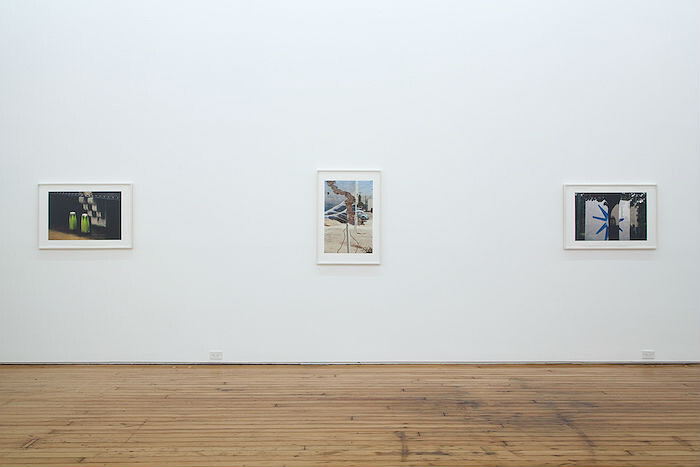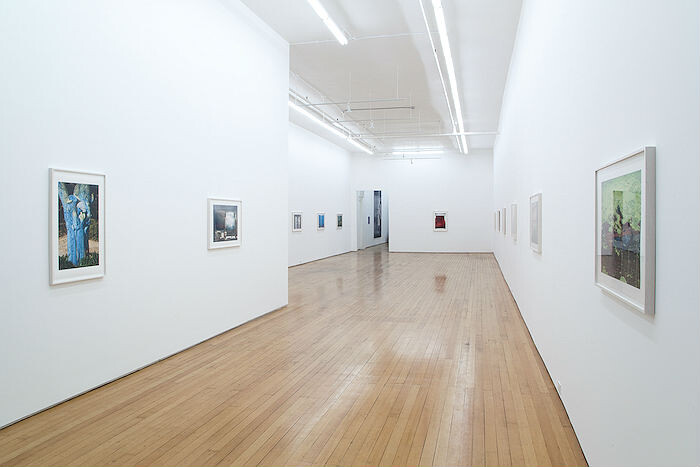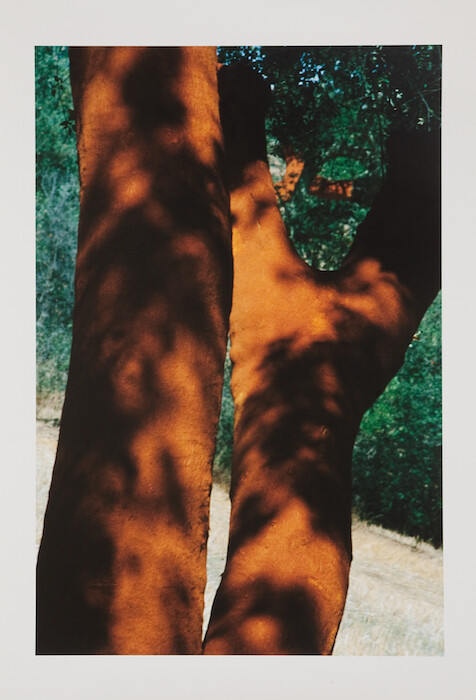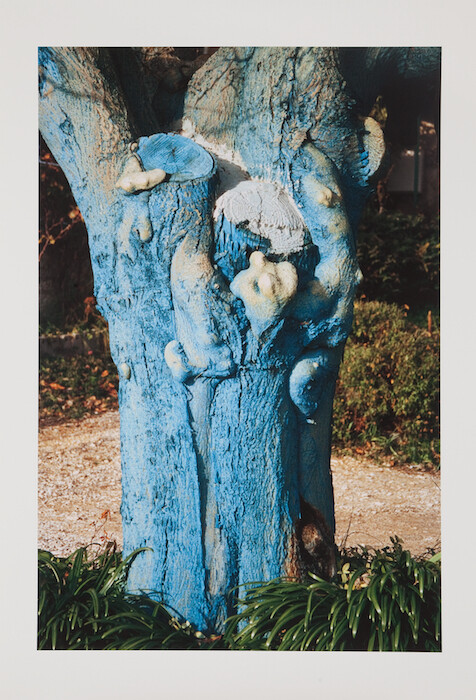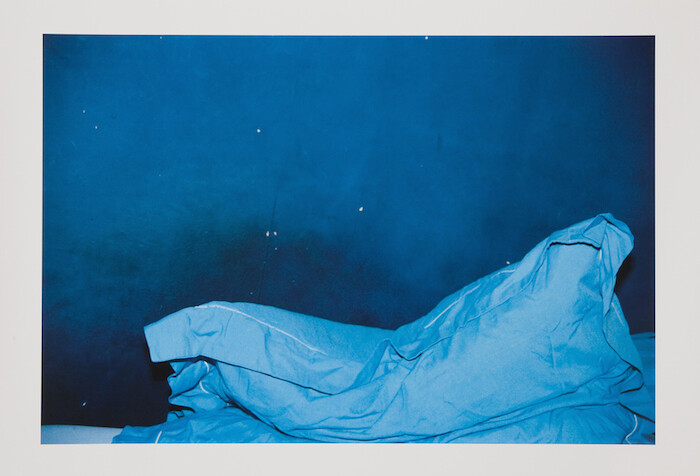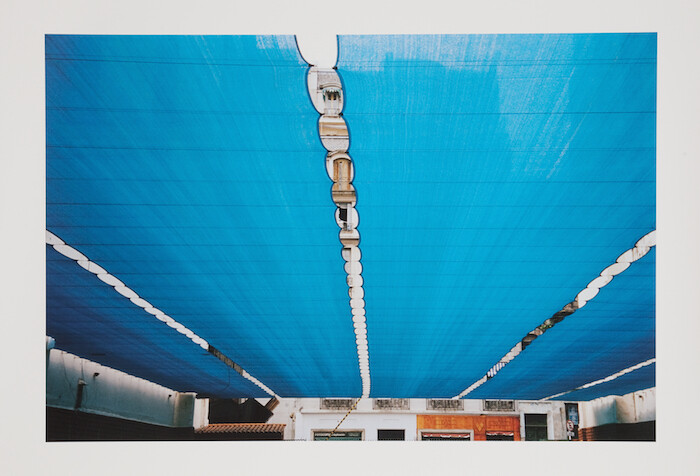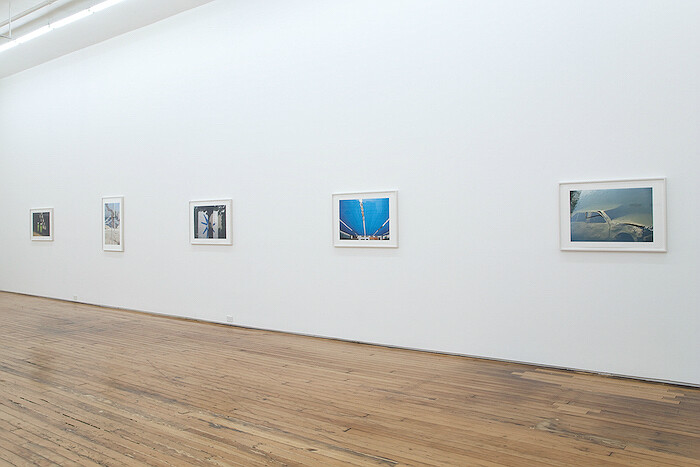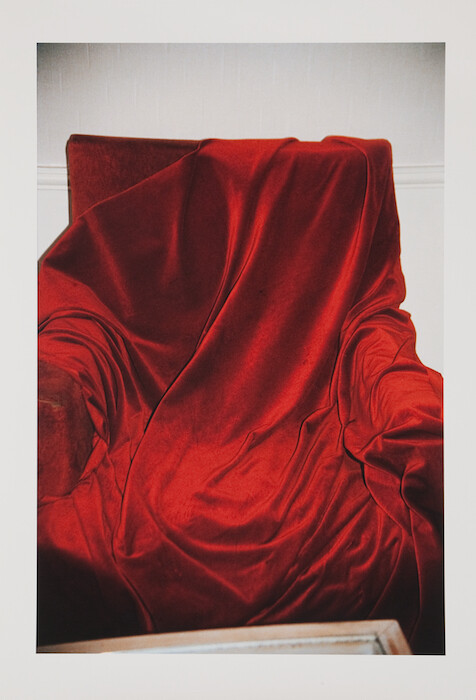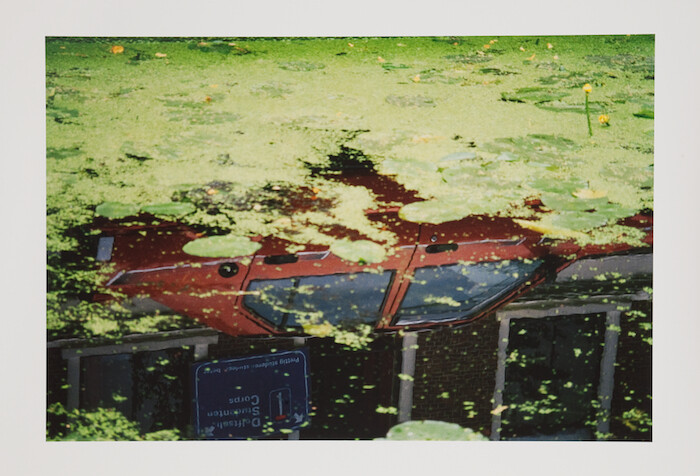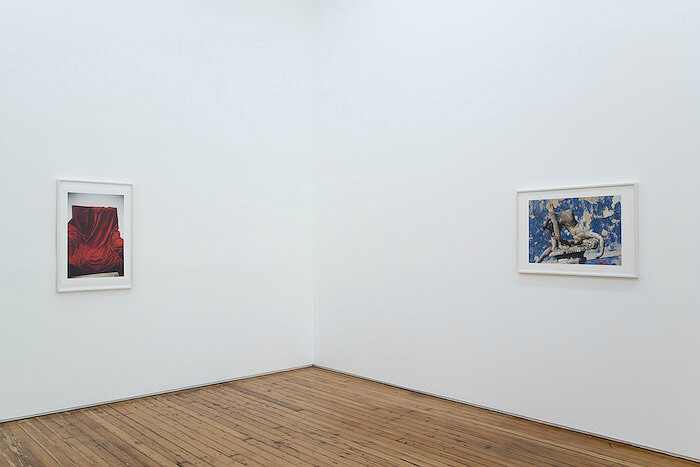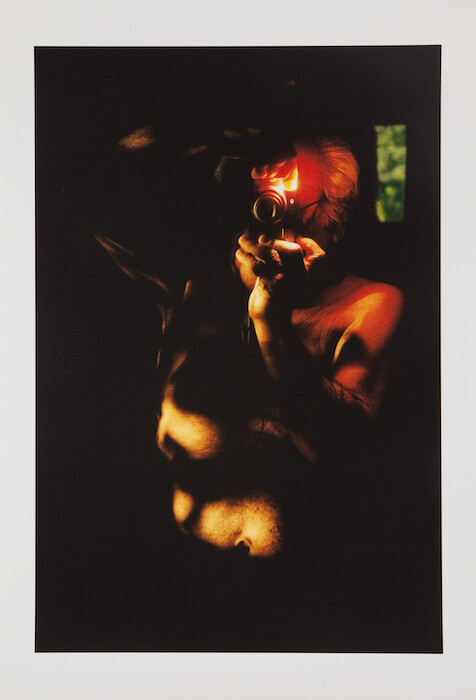In “Ultimate Paradox,” swaths of rich, saturated color hang across each of 20 framed photographs. Rust-hued powdery tree trunks overshadow a flittering, out-of-focus leafy green background (Alentejo, 1993), an angle which would have required the photographer to climb several meters into the tree’s branches; the acid-azure knotted tree trunk shot in Vaucluse (1992) matches an overstuffed pillowcase in Paris (1985) and a taut plastic tarp ceiling installed in Rio (1996); the dripping crimsons of two lone cafe chairs planted outside in late-afternoon Luxembourg (2003) mirror the sanguine velvet regally draping an armchair in Sainte Beuve (1987); and the reflection of an orange car buoys upside-down on an inky pond camouflaged by celadon and electric chartreuse lily pads in the gorgeous Brugges (1997), whose delicate floating leaves’ green is picked up in a pair of ragged concrete posts on the shore caked with moss streaks of the same shade in Amsterdam (1992). Titled after the city in which it was taken, each giclée print, screened on pure cotton paper, is empirically visually pleasing, a tasteful selection of aspirational-lifestyle and global-traveler snaps.
Sainte Beuve also covers The Conspiracy of Art, Jean Baudrillard’s 2005 limb-from-limb dismantling of the global contemporary art system. Perhaps his own photos were his prescription for our current suffering under what he described as the “misery of the oversophisticated image”: he compares the emotional grip of a Peking opera, whose economy of production sees two actors depicting a struggle on a raft in a river during nightfall with their bodies only, and never touching, to the contemporary bombardment of news-channel combat footage. At the time of his writing Conspiracy, the closest resemblance to such timely drama that was witnessed was CNN’s coverage of the Gulf War, during which the media flooded us with three- and four-dimensional images which layer the real over the real to create the perfect illusion1—one whose heavy-handed visual manipulation assumed a poverty of imagination on the part of the viewer. Though Baudrillard had tepidly defended his own studio practice as merely enjoying the photographic process and dismissing entirely its artistic outcomes,2 his emphasis on banality leads all contemporary images to this fate, with their incorporation into the dimension of simulacra as their only recourse for relevance.
The theorist found the resolution to modern aesthetic anxieties and failures in Andy Warhol, an artist whose blatantly vacant prints were at the least open in, and liberated by, their unoriginality, their undemanding banality. He and Baudrillard were aligned in that they both denied any underlying concept in Warhol’s work. Continuing this pataphysical logic, Baudrillard refused to photograph people, animals, or scenes of violence because of their inherent sentimentality—objects, colors, light, and substances, he claimed, have no sexual or sentimental aura.(3) It seems that capturing sentient subject matter would have been too confrontational; if someone or something is looking back at you, you might feel some obligation to get it right. Like a sullen teenager, it’s easier to claim that nothing matters or has any value—whether conceptual, aesthetic, or nostalgic—than to reveal a sincere attempt at representation, or even offhanded experimentation, in one’s image-making.
So, how to look at these photographs? The series had already carried an impressive provenance in Baudrillard’s lifetime, having been exhibited at the Venice Biennale in 1993, and the Moscow Biennale of Photography in 2002, in the latter of which he participated with a show at Na Solyanke Gallery titled “The Murder of Image.” Distancing himself from the label of artist or photographer, he nevertheless toured the work on the international biennial circuit. Claiming indifference, and calling for art’s right-sizing, if not its suicide, did not negate his petition for entry into the same community.
Baudrillard did make one exception to his rule against shooting human subjects: Corbières (1999). Standing shirtless in front of a full-length mirror, Baudrillard’s face is covered by his camera, sparking a fiery flash that creates a few flaming patches of light on his skin as he stands in a charcoal shade. His assertion that any scrambled image takes on an erotic charge(4) is perhaps too narrow a statement to include his self-portrait, since it appears as if his hesitation about stepping out of the shadow completely would open him up to being labeled a fraud, or even worse, for pointing to the fact that his artwork has a high profile because it rests on his reputation as one of his generation’s most highly regarded public thinkers. Taking this photograph and demurely making it public is an admission of his pleasure in participating in art. He is not seducing, but hiding.
(3) Jean Baudrillard, Fragments: Cool Memories III (Verso: London, 1990-1995), 90. (4) Jean Baudrillard, op cit, 124.
Jean Baudrillard, The Conspiracy of Art (Semiotext(e): New York, 1996), 113.
Jean Baudrillard, op cit, 72–74.
